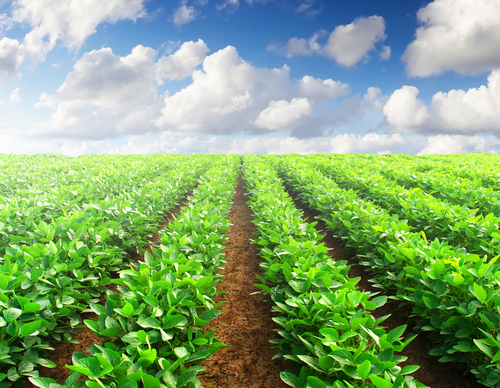South Africa offers a wide range of climatic zones to suit many different agricultural and farming opportunities. The country offers various zonal areas ranging from a Mediterranean climate to sub-tropical, temperate and desert areas. It is divided into a number of different farming regions depending on climate, soil type, natural vegetation and farming practices. From one point of view, it is an ideal country in which to make a good living from the land. Agriculture is, in itself, an important part of rural development progression through job creation and poverty alleviation. There are, however, many factors which are challenging to the farming and agricultural community, and these must be taken into account when considering farming or agriculture as a lifestyle and means of making a living. These factors include drought, rising costs of fuel, unstable market conditions, and difficulties with labour, as well as the constant threat of farm attacks and “land-grab” uncertainties.

Farming operations range from large-scale commercial farming businesses which are able to supply on a national and international level, to informal small scale or subsistence farming, as more poorer communities enter the farming and agricultural markets. Subsistence farmers now number in their thousands, and their produce is normally used to supplement food supplies within individual households or sold locally to marginally increase the farmer’s income and help in the supply of food to the local community. Farmers who produce on a small scale are able to generate some form of revenue from basic farming.
A Few Different Types of Farming and Agricultural Crops
Grains
Grain forms one of the largest agricultural industries in Southern Africa, and South Africa is generally self-sufficient in this regard. In 2018, it was estimated that between 25% and 33% of the country’s gross agricultural production came from grain. Maize is the largest locally produced field crop, being the most important carbohydrate in this region, with wheat production close behind.
Sugarcane and sunflowers are also widely grown. South Africa is the world’s 13th largest sugar producer. Sugarcane is grown in the Eastern Cape, Kwazulu-Natal and Mpumalanga. Sunflowers produce oil which is widely used in cooking and is known as a Commercial Cash Crop.
Nuts
Tree Nuts. A variety of nuts are grown in South Africa, including almonds, pistachios and walnuts, but only two types, the macadamia and the pecan, are grown to any great degree. Along with Australia, South Africa is one of the world’s largest exporters of macadamia nuts. These nuts form South Africa’s most profitable crop per hectare, yielding the highest return per hectare. Pecans are also important crops, and are produced mainly by farmers in the Northern Cape. Walnut production is confined mainly to the Eastern high ground areas, whilst almonds are best suited to the Western Cape, and pistachio nut production is confined to the Prieska area.
Peanuts – or groundnuts – are grown mainly in the warmer parts of South Africa, and are well adapted to our climate. They are produced mainly in the north-western regions of South Africa, being the Western and North-Western Free State, Northern Cape and the North West Province. A lower production output of these nuts may be found in Limpopo, Mpumalanga and KwaZulu-Natal.
Fruit Farming
Fruit (mostly citrus, comprising oranges, lemons, limes, grapefruit, etc.) and deciduous fruits are exported, as well as supplying part of the local market. Deciduous fruits include apples, plums, nectarines, peaches, grapes, apricots, pears, figs, cherries, blueberries, watermelons, avocados and kiwi fruit. Deciduous fruit is defined as fruit which grows on trees, bushes or vines, and besides being delicious, is a wonderful source of dietary fibre. The Western Cape and the Langkloof Valley in the Eastern Cape are the main growing areas for deciduous fruits, although smaller growth areas may be found along the Orange River and in the Free State, Mpumalanga and Gauteng. South Africa remains one of the main fruit producing countries in the world, with more than 50% of its agricultural export being fruit.
Additional “subtropical” fruits grown in South Africa are avocados, bananas, mangoes, lychees, payayas and pawpaws, granadillas, olives, pineapples, coconuts and guavas. It must be noted that some of the above fruits can only be grown in specific areas due to their climatic requirements.
For the purposes of this article, many other fruits have necessarily been omitted from this list and will be detailed in a later article.
Vegetable Farming
South Africa is self-sufficient when it comes to vegetables crops such as potatoes, beetroot, tomatoes, all types of onions, sweetcorn, cabbage, broccoli, cauliflower, pumpkin, squash, amongst others.
Protea and Cut Flower Farming
There are farms which specialize in the growth and export of indigenous South African cut flowers such as proteas and fynbos, which are extremely popular overseas and form approximately 80% of the cut flower exports from this country. There are also growers exporting non-indigenous cut flowers such as chrysanthemums – which are popular in the Middle East – and lilies. The leatherleaf fern and certain types of grasses have proven to be popular in Europe. Although roses are a popular flower here as well as overseas, South Africa does not export these as the Kenyan and Ethiopian markets already dominate the European market in this area. Strangely enough, there is always a year-round demand overseas for white flowers. South Africa’s main export markets for cut flowers are Europe, England, Russia, the USA and Japan.
Livestock Farming
Livestock farms in South Africa range from extensive, extending over many thousands of kilometers, which is necessary for the farming of sheep, cattle and various types of game, to more intensive farming aimed at poultry and pig farming. Livestock farming is carried out in areas with low agricultural productivity, making it an ideal use of the land which would otherwise not be used to its full potential. South African farmers raise cattle, pigs, sheep, ostrich, poultry, goats and rabbits, and have a thriving dairy and egg production industry. In 2000, small-scale imports began of a new breed of animal called an alpaca, originally from South America. This animal is a long-haired domesticated mammal related to the llama and highly valued for its wool, which is a mixture of wool, alpaca and silk, and has now become a registered breed in South Africa.
Farmers are integral to any country’s success and survival
Farmers of live and agricultural produce in any country provide both their own local market and the international import market with essential additions to the nutritional needs of their people, as well as meeting certain non food-related requirements by way of cut flowers, plants, of the any country with essential foods. Farmers and agricultural producers are the lifeblood of any country, and are essential for its survival. We tend to forget that our food does not originate from the shelves of our local supermarkets, but from the hard work, planning and sweat of our farmers. These people are an invaluable part of any country’s survival and deserve our respect and thanks. Any country, and South Africa in particular, must encourage good farming practices and the influx of new farmers with the necessary knowledge, skills and experience to continue and preserve this vital part of our local and export food market.
